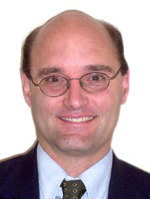 Year-end report from CVD
Year-end report from CVD
December 17, 1999
From Rob Richie, CVD Executive Director:

I hope that you are all looking forward to a pleasant holiday season and eventful new year. Following are a few final items from 1999 that I thought might be of interest.....
- Brief review of developments: Mention of New
Zealand, Venezuela, Italy, Bosnia, San Francisco, Cambridge, new CVD
report on web
- Year-end from CVD: Letters from John Anderson and
myself that survey today's political scene, our projects in 1999 and
our plans for the upcoming year
Also, please note that you can now donate to CVD on-line, using a credit card. We are listed among the charitable organizations at GiveForChange.com -- many donations this month will be doubled by the site's sponsor, Working Assets Long Distance.
All the best,

Rob Richie
Recent Developments
In 1993, New Zealand became the first English-speaking democracy to adopt a party list method of proportional representation (PR) in a national referendum -- one in which the PR campaign was victorious despite being outspent by more than 10-1 by opponents. Last month, New Zealand held its second PR election. Voter turnout was 83%, and 94% of voters helped to elect a representative. The government was ousted, with a new coalition government swiftly formed by two opposition parties. Instructively, 63 of 67 seats in the single- seat districts went to the two major parties, despite those parties winning only 68% of votes cast. Fortunately, another 53 seats were allocated parties in order to provide fair representation. For more information, see:- Pro-PR Electoral Reform Coalition www.mmp.org.nz.
- NZ Government www.electionresults.govt.nz
- Tracking polls and analysis www.nzes.org
Bosnia will use instant runoff voting (also called "the alternative vote") in its next presidential election -- the need for winners to reach out to supporters of other candidates was seen as a major reason for the change... San Francisco has delayed plans to put the instant runoff on the ballot, but expect news soon on serious movement toward adoption of the instant runoff in cities and states... Cambridge (Mass.) elected its city council and school board by proportional representation (the choice voting model) in November. There is much fascinating information on these elections at the web site of the Cambridge Civic Journal (www.math.harvard.edu/~rwinters/ccj.html).
Finally, note that next week our Center will release a sneak preview of two of three planned major reports relating to elections to the U.S. House of Representatives. "Dubious Democracy" will have a wide array of election statistics from 1982 to 1998. "Monopoly Politics 2000" will make predictions in most U.S. House races based on the partisan leanings of districts and provide a wealth of analyses of the roots of non-competitiveness in elections.
Year-End Report From CVD:
From the Desk of John B Anderson
December 17, 1999
Greetings!

Many of you have been loyal supporters of The Center for Voting and Democracy since our founding conference in 1992. Others of you have recognized the need for fairer elections in the years since due to one exciting development or another -- developments that make me very optimistic about achieving fundamental reform in the coming decade. To all of you, let me express my gratitude and my hope that you will help us build on our successes in 2000.
As a donor to many non-profit organizations myself, I know that this is a time of year when mailboxes sag with the weight of year-end appeals, mail-order catalogues and, more happily, personal holiday cards. Let me be brief and to the point: the state of our politics and our representative government must be improved. Consider that:
- A mere 36% of Americans voted in 1998's national elections. Less than one in five Virginians voted in that state's critical legislative elections in 1999.
- Our campaigns too often degenerate into zero-sum attacks rather than substantive debate about issues. Manipulating winner-take-all politics is too easy for modern consultants.
- Fully 95 congressional incumbents faced no major party opposition in 1998. More than two in five state legislative races that year were uncontested.
- 49 of 50 states have no third party state or federal legislators. Third parties are typically dismissed as spoilers, which indeed our voting system generally consigns them to be.
- Our legislatures rarely reflect the exciting and
important diversity of our people. The Senate is merely the most
extreme example, with no blacks or Latinos and only nine women.
Executive director Rob Richie's report below provides more details on these developments and provides an informative sketch of our plans for the new year and decade.
The demand for reform is compelling. Our projects are timely. All we need is your continued good will and support to help us lead a formidable charge in 2000.
With my best wishes,

John B. Anderson, President
Voting System Reform On the Move
A Report by CVD's Rob Richie, December 1999
Since our founding in 1992, the Center for Voting and Democracy has enjoyed significant achievements. But nothing is likely to match potential gains in the next two years. Long-standing educational outreach has led to collaborative projects with major constituency organizations and concrete opportunities for real reform.
Instant runoff voting
Instant runoff voting (IRV) has great potential to burst onto the political landscape in 2000. IRV is a system of preferential voting that protects majority rule and increases participation by expanding the range of voters' choices in one-winner elections (such as those for president, governor and mayor). IRV simulates a series of traditional runoff elections in a single election.
In 1999, legislation to enact IRV for statewide and federal offices was introduced in Vermont and passed the state senate in New Mexico; both efforts will continue in 2000. A well- backed initiative to adopt IRV for state and federal elections in Alaska has been launched -- expect several other states to debate IRV in 2000. Voters in Santa Clara (Calif.) and Vancouver (Wash.) have adopted charter amendments to permit IRV, and IRV efforts are advancing in several major cities.
The Center has played a key role in these developments. In addition, this year we produced a series of IRV articles and materials -- including a new video narrated by actress Kelly Lynch -- that are gaining new allies on a near-daily basis.
Proportional Representation
The Center remains deeply committed to proportional representation (PR). PR provides fuller representation of the electorate by reducing the share of votes necessary to win a fair share of seats. Consequences include greater participation, a deeper debate on issues, more inclusive legislatures and a weakening of money's grip on our politics.
We see major opportunities to increase serious consideration of PR in the next two years as local and state governments across the nation undergo the tumultuous process of redistricting. Redistricting is the Achilles' heel of our winner-take-all system, exposing how it limits choices at the polls and polarizes politics and governance.
The Center is well-prepared to keep a steady spotlight on problems with current methods of redistricting and the benefits of alternative approaches, particularly PR. This month we will publish the first of three new reports on our comprehensive web site: "Dubious Democracy" (a review of U.S. House elections from 1982-1998 and their appalling lack of competition); "Monopoly Politics" (in which we predict winners and victory margins in House races); and "A Citizen Guide to Redistricting" (with a state-by-state review of redistricting maps, law, history and prospects).
We are pleased to see that interest is rapidly growing in adopting PR to comply with the Voting Rights Act. The Center has assisted North Carolina Congressman Mel Watt, who this year introduced a bill (HR 1173) that would allow states to use PR for House elections. Subject of a lively hearing in September, the bill has bi-partisan support.
Collaborative Projects
The Center has established collaborative projects with several organizations. One important collaboration focuses on outreach to black elected officials, NAACP chapters and historically black colleges in the South. Another project involves producing a clear and lively handbook on PR for local community activists, to be used in hands-on outreach in localities. We are advising several state League of Women Voters groups that this year launched two-year studies of PR. We will work closely with several women's organizations in the wake of NOW's formal endorsement of PR this fall.
We have co-produced a highly informative new video on the history of cumulative voting in electing Illinois' state legislature -- one which makes it clear why the state's Republican governor, Democratic state senate leader and most thoughtful Illinois political players support its restoration.
By adopting cumulative voting for school board elections this spring, Amarillo (TX) became the nation's largest jurisdiction to use it. More than 50 Texas jurisdictions have adopted this semi-proportional system to settle voting rights challenges. The Center contracted with a community educator to explain cumulative voting in Amarillo. With success in this high-profile election, observers estimate that an additional 50 Texas localities may adopt cumulative voting by 2001.
Having hired several new staff members and consultants to pursue these projects, the Center needs additional funds. We are counting on our members' ongoing support as we head into 2000.